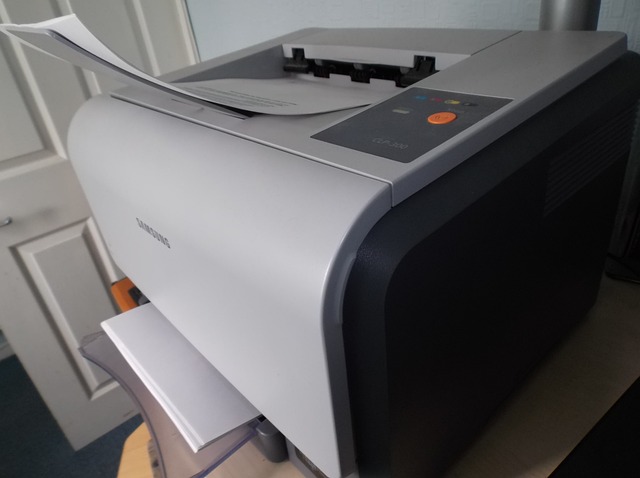Printer buying can be confusing, especially if you’re new to the world of printing. That’s why we’ve put together this comprehensive list of factors to consider when buying a printer so that you won’t need to have hassle with printer maintenance later on. Here, we’ll cover everything from the types of printers on the market today and how they work, all the way through to choosing which features are right for your needs.
Multifunctionality
Multifunctionality is the ability to print, copy and scan. If you want your printer to do all these things, it’s best to get one that has multiple functions. This can save money in the long run because it’s less expensive than buying separate devices that do just one particular task.
For example: if you’re using your printer only for printing documents, then buying a multifunction device might be overkill since there aren’t many ways in which this function can be enhanced by adding additional features like faxing or scanning documents (unless those are among the main reasons why you bought such a device). However, if most of what you need from this device is its primary purpose of being able to produce printed copies from digital files stored on disk drives then having both options available might make sense!
Interface and Connectivity
If you’re looking to get your printer up and running, there are a number of different ways it can connect to the Internet. Printers come in many different shapes and sizes, but the most common way is via USB or Ethernet connections. You may also find wireless printers that connect wirelessly through Wi-Fi or Bluetooth; these are great if you don’t have access to an open network port on your computer because they sync directly with each other without needing any additional software installed on either device.
Wireless printing allows users to print from their mobile devices without having any cables laying around (or even having them near). Cloud printing allows documents stored in cloud storage services such as Google Drive or Dropbox onto your printer directly from within applications like Microsoft Word—it’s easy! Scanning functionality has been improving over time as well: now almost all scanners offer some sort of automatic document recognition system built into them so that when we scan something into our computer’s hard drive we’ll automatically save it with appropriate naming conventions so that later on someone else could easily find what we’ve put together ourselves instead just having all those little pieces lying around randomly scattered throughout various folders/folders etc.
Network Capabilities
One of the first things you should do when buying a printer is to find out what kind of network capabilities it has. You should ask yourself three questions:
Is it wireless or wired? Wireless printers are great for home environments, but they can be prone to interference and slow down as a result of interference from other devices on your network. If you live in an area with lots of RF noise (like an apartment building), consider getting a wired printer instead—it’ll be able to keep up without any problems!
What speeds are supported by my printer? Printers usually support either USB 2.0 or faster protocols such as USB 3.1 Gen1 (3 Gbps) and Thunderbolt 3 (40 Gbps). Make sure that whatever speed your current computer supports matches up with what’s required by each new piece of hardware that goes into your system; otherwise one thing might end up overheating while another overheats because they’re trying to run at different speeds simultaneously on different ports.”
Print Speed
Print speed is an important factor to consider when buying a printer. The faster the printer, the more expensive it is—and that can be good or bad depending on your needs.
The average print speed for most home printers is around 20 pages per minute (ppm). This means that if you need to print 50 pages in one hour, you should expect your printer to take around 40 minutes or less!
The average time for a full page of text is about 10 seconds; however, this time varies depending on how busy your office might be at any given moment. If there are many people asking for documents at once and multiple people are working on different projects simultaneously then things will move faster than usual due to increased demand from other employees who may want copies made quickly as well!
Print Quality
Print quality is a major factor to consider when buying a printer. Print quality depends on the type of printer, resolution, speed, and color quality. The following are some factors you should keep in mind when evaluating print quality:
The higher the resolution of the printer’s image sensor (or film), the better it will be at reproducing detailed images with fine details. This can be important if you’re printing photos or illustrations from your computer onto paper or other materials such as vellum or canvas; however, if all you want is basic text output then it doesn’t matter too much as long as your computer has enough memory space for storing those images before they’re sent off to their destination via USB cable rather than being printed directly onto paper which would result in the blurred text unless something like a laser printer was used instead which outputs at much lower resolutions due mainly due its smaller size compared with inkjet models.
Paper Handling
The size of your printer’s paper tray can make all the difference when you’re trying to fit large amounts of paper into it, or if you have multiple types of papers that need different amounts per sheet (like glossy and matte). Some printers use separate trays for each type while others have one big tray that can hold both. If your printer doesn’t have dedicated trays for each type, it’s best to go with one that has a maximum capacity so there aren’t any issues with overlap between pages or sheets in other areas later on down the line!
Conclusion
We hope that this article has helped you to understand the importance of choosing the right printer for your business. Whether you’re planning on purchasing a new printer or just setting up an existing one, it is important to consider all of these factors before making any decisions.


